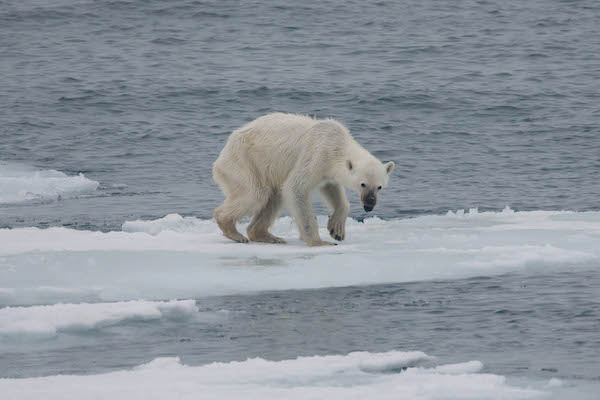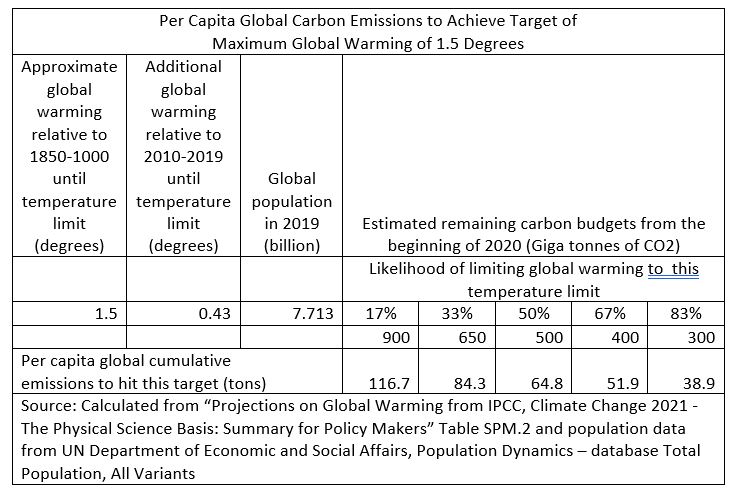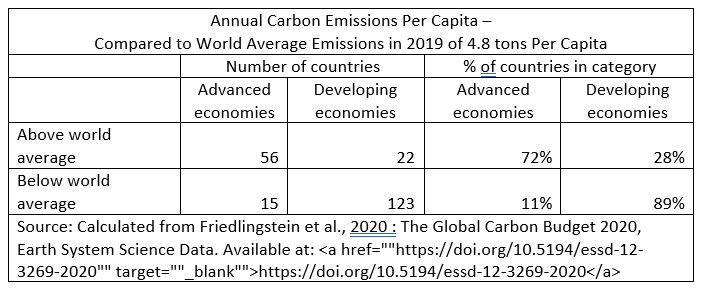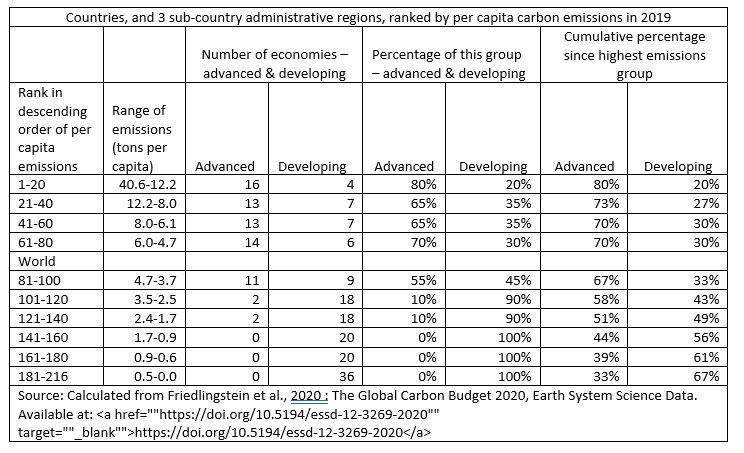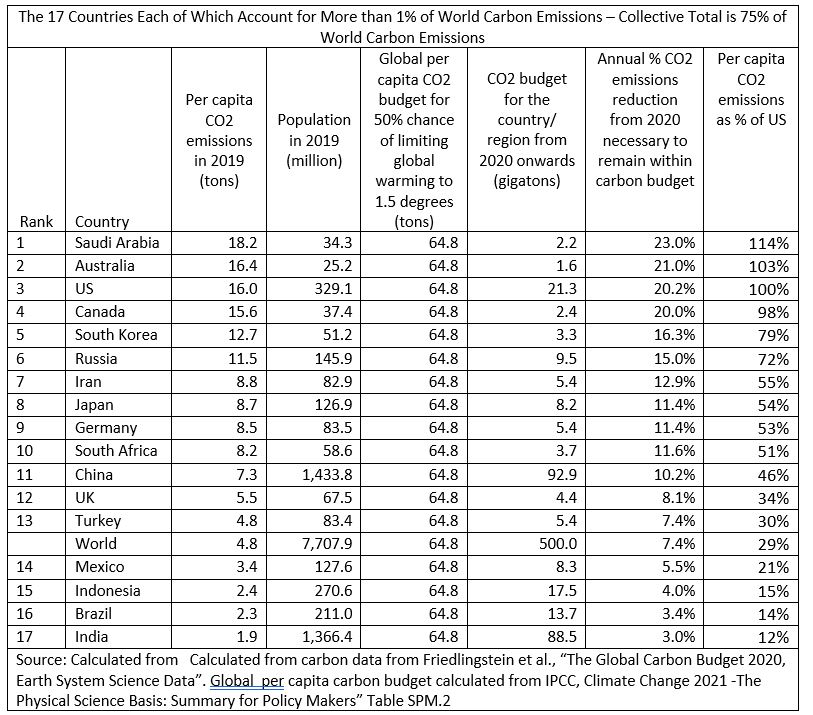The COP26 conference on climate change is discussing an issue which will profoundly affect every person on our planet. Climate change, together with nuclear war, is one of the two issues which can overturn the present basis of human civilisation. Because of the extreme seriousness of this issue, the COP26 conference should therefore be an arena for strictly objective international scientific discussion and international cooperation. Fortunately, as will be seen, strictly objective scientific evidence on the issue of climate change has been put forward in the run up to the conference.
Regrettably, however, COP26 has also become a site for geopolitical propaganda, primarily carried out by the U.S., to try to obscure the realities on climate change. This attempts to present the situation on climate change as being that the advanced countries, and in particular the U.S., are playing a leading role in the fight against climate change and that it is developing countries, and in particular China, which are the chief problem on climate change. This is shown by media reflecting this propaganda–for example the Financial Times, surveying the conference, declared: “China and India cast pall over climate ambitions ahead of COP26.”
As will be seen this claim is the exact reverse of the truth. It is the advanced countries, and in particular the U.S., which are the chief problem on climate change due to their far higher per capita carbon emissions than developing countries. Furthermore, the policy positions advanced by the U.S. are a demand that the advanced countries, and in particular itself, should be given a privileged position in terms of the right to emit far more carbon per person than developing countries. This is unacceptable from the point of view of justice, democracy, the equality of nations, and even racially–this policy demands that overwhelmingly white countries should be given a privileged position compared to people of colour.
Because of the seriousness of this a series of articles will be run here on the implications of climate change. But this article has a strictly limited aim of setting out the factual position. This shows why it is clear that the U.S. and advanced countries are demanding a privileged position for themselves and why this is unacceptable.
The IPCC’s scientific evidence
It is fairly well known that the U.S., and advanced economies, attempt to present the issue of climate change in a way that does not acknowledge their overwhelming historical responsibility for carbon emissions and therefore climate change. This criticism is entirely valid–it is simply because it is well known it will not be dealt with here. But what is not so well known is that before the COP26 conference objective scientific evidence has also been put forward on the current situation on climate change which shows exactly the same pattern. In particular, the Intergovernmental Panel on Climate Change (IPCC) has published an important report: “Climate Change 2021: The Physical Science Basis”. The purpose of this article is to analyse the data produced by the IPCC.. This clarifies clearly that the claim being made by the U.S. and other advanced countries is for a privileged position in current carbon emissions. This is therefore the issue concentrated on in this briefing.
Analysing the core of the present situation, the key factual data concluded by the IPCC is set out in Table 1. As will be seen the IPCC gives various probabilities of hitting the key goal of 1.5 degrees of warming compared to pre-industrial levels, depending on the number gigatons of carbon which is emitted after the beginning of 2020. Thus with 900 gigatons of carbon emitted there is only a 17% chance of hitting this target, with 650 gigatons of emissions there is a 33% chance, with 500 gigatons a 50% chance of hitting the target, with 400 gigatons of emissions a 67% chance, with 300 gigatons of emissions an 83% chance. All these variants are worth analysing but, as is it the most central one, what will be analysed in this article is the one with the 50% chance of limiting global warming to 1.5 degrees. This requires that a global 500 gigatons of carbon is emitted.
Given this 500 gigaton figure it is then easy to calculate the per capita “carbon budget”, that is the maximum allowable carbon emissions for each person on the planet–which is 64.8 tons. Given the population of each country it is then also easy to work out the permissible carbon budget for each individual country. This means that any country asking for a per capita cumulative carbon budget above 64.8 tons is asking for a privileged position compared to humanity as a whole, and any country with a cumulative per capita carbon emission below 64.8 tons is making an above average aid to humanity in meeting this target.
Changes in population
To complete the factual picture, it is then necessary to note that over long periods of time, up to 2050 or beyond, the population of individual countries will change. For example, on UN projections, between 2020 and 2050 the population of the U.S. will increase by 15%, India’s population will increase by 19%, but China’s population will fall by 3%, Germany’s population will fall by 4%, Japan’s population will fall by 16% etc. Therefore, it is necessary to make calculations based not only on present populations but on future population. For this purpose, in this article, projections from the UN Department of Economic and Social Affairs will be used.
High per capita carbon emissions are overwhelmingly concentrated in high income economies
Turning to the present situation, it is then completely clear that high per capita carbon emissions are overwhelmingly concentrated in high income countries.
This key data on this is summarised in Table 2, which shows a comparison to world average per capita emissions–to be clear it is not suggested present world emissions are sustainable, they are too high, but this is primarily to simply give a point of comparison for judging present relative emissions.
The pattern is evidently clear. Of the 213 countries (and 3 sub-country administrative regions), for which there is data, 78 have per capita carbon emissions above the world average. But of these 56, that is 72%, are advanced economies. Only 22, that is 28%, are developing economies. In contrast there are 138 countries which have below world average emissions–of which only 15, that is 11% are advanced economies, and 123, that is 89%, are developing economies.
In summary, the factual situation is entirely clear. It is the advanced economies which overwhelmingly have above average per capita CO2 emissions and it is developing economies which overwhelmingly have below average per capita emissions. In short it is advanced economies whose policies are by far most inadequate from the point of view of restricting emissions.
The detailed situation of advanced and developing economies
Looking in more detail at the situation of advanced and developing countries this shows the situation is even worse. Table 3 shows the 213 countries and three sub-country administrative regions ranked by their level of per capita emissions. These are taken in groups of 20–the highest 20 per CO2 carbon emitters, then countries ranked 21-40 by carbon emissions, then countries ranked 41-60 etc.
The pattern is crystal clear. The higher the level of per capita carbon emissions the more the situation is dominated by advanced economies. Of the 20 countries with the highest per capita emissions 16, that is 80%, are advanced economies. Of the countries ranked 21-80th in terms of per capita carbon emissions 40, that is to two thirds, are advanced economies. Only once significantly below world average per capita emissions are arrived at are there more developing than advanced economies in each group.
In summary, it is the advanced economies which have by far the worst results in the world in terms of excessive per capita carbon emissions. And the higher the level of per capita carbon emissions the more the situation is dominated by advanced countries. Therefore, not merely historically but in terms of current emissions, the advanced economies have the policies which most diverge from what is required for the planet. By far the greatest violators of what is required on climate change are the advanced economies, and the biggest proportional reductions which are required are therefore also in advanced economies.
The fake criteria for climate emissions put forward by the U.S.
Once the facts on global climate emissions are grasped then the fake character of the criteria for U.S. “leadership” in fighting climate change becomes transparently clear.
The U.S. attempts to present the situation as the criterion for success in fightin climate change is the percentage reduction from current emissions. Thus, Biden has announced that the U.S. aims at “to achieve a 50-52 percent reduction from 2005 levels” of emissions which is supposed to represent “Building on past U.S. leadership” Given that in 2005 U.S. per capita CO2 emissions were 20.8 tons this means that the U.S. proposes to reduce per capita carbon emissions by 2030 to 10.4 tons. But this means that by 2030 the U.S. proposes that its level of per capita CO2 emissions should be 220% of the present world average!
That is not leadership, it is carbon damage on an incredible scale, and a claim for a completely privileged position for the U.S. in the world. It means, for example, that by 2030 the U.S. claims its per capita carbon emissions should be 42% higher than China’s are today. This is not U.S. leadership; it is to be a total climate change laggard.
The entire method put forward by the U.S., based on percentage reduction from present emissions levels, is fraudulent–a distortion of reality. Because all this method does is to protect the position of the highest CO2 emitters! To take a few examples, if the U.S method of aiming at a 50% reduction in emissions by 2030 was aimed at, and applied to present levels, this would mean a claim that the U.S. was allowed to emit per capita 8.0 tons of CO2, China was entitled to 3.7 tons, Brazil to 1.2 tons, India to 1.0 tons, and the Democratic Republic of the Congo to 0.02 tons! Such comparisons have nothing to do with U.S. leadership on climate change–on the contrary it shows the U.S. is claiming a privileged position for itself. It also shows why similar claims for a privileged position by advanced economies must be rejected.
What is being shown by the U.S. is not leadership on climate change but a claim for privilege by advanced countries and, in reality, for the white population of these countries against the overwhelming majority of humanity who are people of colour and who live in developing countries. Such an approach is not merely unacceptable from the point of view of justice but it is also ineffectual–it will obviously never be accepted by the 84% of the world’s population who live outside the advanced economies.
The real situation on climate change
Fortunately, the scientific data produced by the IPCC makes it possible to calculate the real changes which are required to combat climate change. These are summarised in Table 4.
To analyse the effect of this, as with most issues in the world–such as the percentage of world population, the percentage of world GDP etc–the key consequences for climate change are concentrated in a small number of countries. Only 17 countries each have carbon emissions accounting for more than 1% of the world total. Together these countries account for 75% of world carbon emissions. Therefore, analysis of these countries is sufficient to follow the world trends.
The key data for these countries is set out in Table 4. The pattern is clear. Of the world’s largest emitters of carbon only two, Saudi Arabia and Australia, have higher per capita emissions than the U.S. Furthermore, despite their extremely reressive policies, these are small emitters of CO2 compared to the U.S.- Australia accounts for 1.2% of world carbon emissions, and Saudi Arabia 1.8%, compared to the U.S.’s 14.8%.
In summary, the U.S. stands in a higher league all of its own in terms of its per capita CO2 emissions. In particular, making the comparison to the largest developing countries, China’s per capita CO2 emissions are only 46% of those of the U.S., Indonesia’s 15%, Brazil’s 14%, and India’s 12%. Any attempt to portray the U.S. as a leader in fighting climate change is therefore grotesque.
Because U.S. per capita carbon emissions are so much higher than any other major country it makes clear why U.S. CO2 emissions cuts must be correspondingly much more rapid than any other major country to fit within its carbon budget. As shown in Table 4 U.S. annual average reduction of CO2 emissions from 2020 onwards must be 20.2% a year–compared to 10.2% a year for China and 3.0% for India. (To be clear, for all countries, this is not the precise annual average that must be achieved but the annual average achieved over time–so if emissions fall more slowly, or rise, in the initial period there must be correspondingly rapid falls after this initial period). To give a comparison, this average means that by 2030 U.S. emissions per capita should have fallen to 1.3 tons per capita, compared to its proposed target of 8.0 tons per capita. That is the U.S. is proposing that its per capital carbon emissions by 2030 should be more than 6 times what is required to fit within its carbon budget. This has nothing to do with climate change leadership, it is climate change vandalism.
Conclusion
The above data does not all detract from the fact that climate change is one of the two most serious threats facing humanity–together with nuclear war. The world needs to radically reduce CO2 emissions. As China, fortunately, is the most advanced of the developing countries, it needs to limit CO2 emissions. But the attempt to present developing countries, and in particular China, as most responsible for the danger of climate change is purely propaganda by the U.S.–China ranks number 50 in the world in terms of per capita carbon emissions. The U.S., and advanced economies in general, are not leading on climate change, they are claiming a privileged position for themselves.
There are three main forces in the world who are fighting for a just response to the common threat to humanity posed by climate change:
- The Global South–that is developing countries, who as the data shows, are being fundamentally discriminated against by the advanced countries and in particular the U.S.
- China, which as the most advanced and powerful of the developing countries, is a particular target of U.S. distortion and propaganda.
- Progressive sections of the Western movement against climate change–while, as noted, the U.S. is primarily engaging in propaganda and attacks on developing countries and China there are nevertheless undoubtedly forces within the Western movement against climate change which reject such positions. Furthermore while scientists, and research by organisations such as the IPCC, tries to be careful not to become too involved in policy questions their research entirely undermines the claims of the U.S.
To put matters in a nutshell, the U.S. is regretably attempting to carry out a crude propaganda campaign around COP26. The facts show clearly that what the U.S. is attempting to claim for itself is a privileged position against climate change. It is not the leader on climate change but the world’s greatest climate change laggard. It is advanced economies which are claiming a privileged position on climate change. Any force fighting climate change in the West has to take this as a fundamental starting point. The U.S. is not leading the world on the fight against climate change, it is simply claiming a privileged position for itself.
The fight against a climate change is a very real one for the whole of humanity. But its starting point, as the facts show, must be that it is the advanced countries that must make by far the biggest proportional reductions in CO2 emissions. The attempt by the U.S. to present the main problems as being in the developing countries, not the advanced ones, is a pure statistical distortion.

